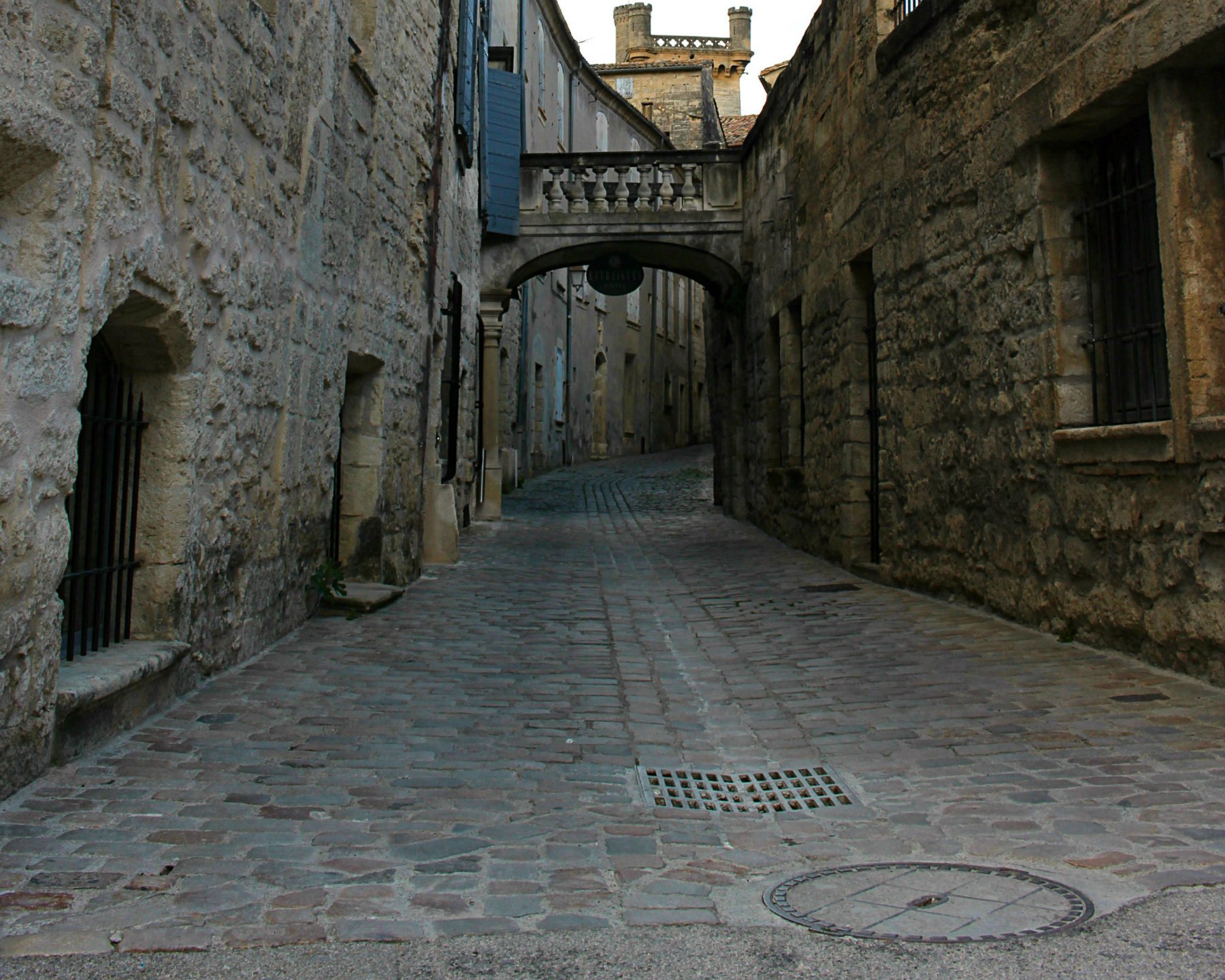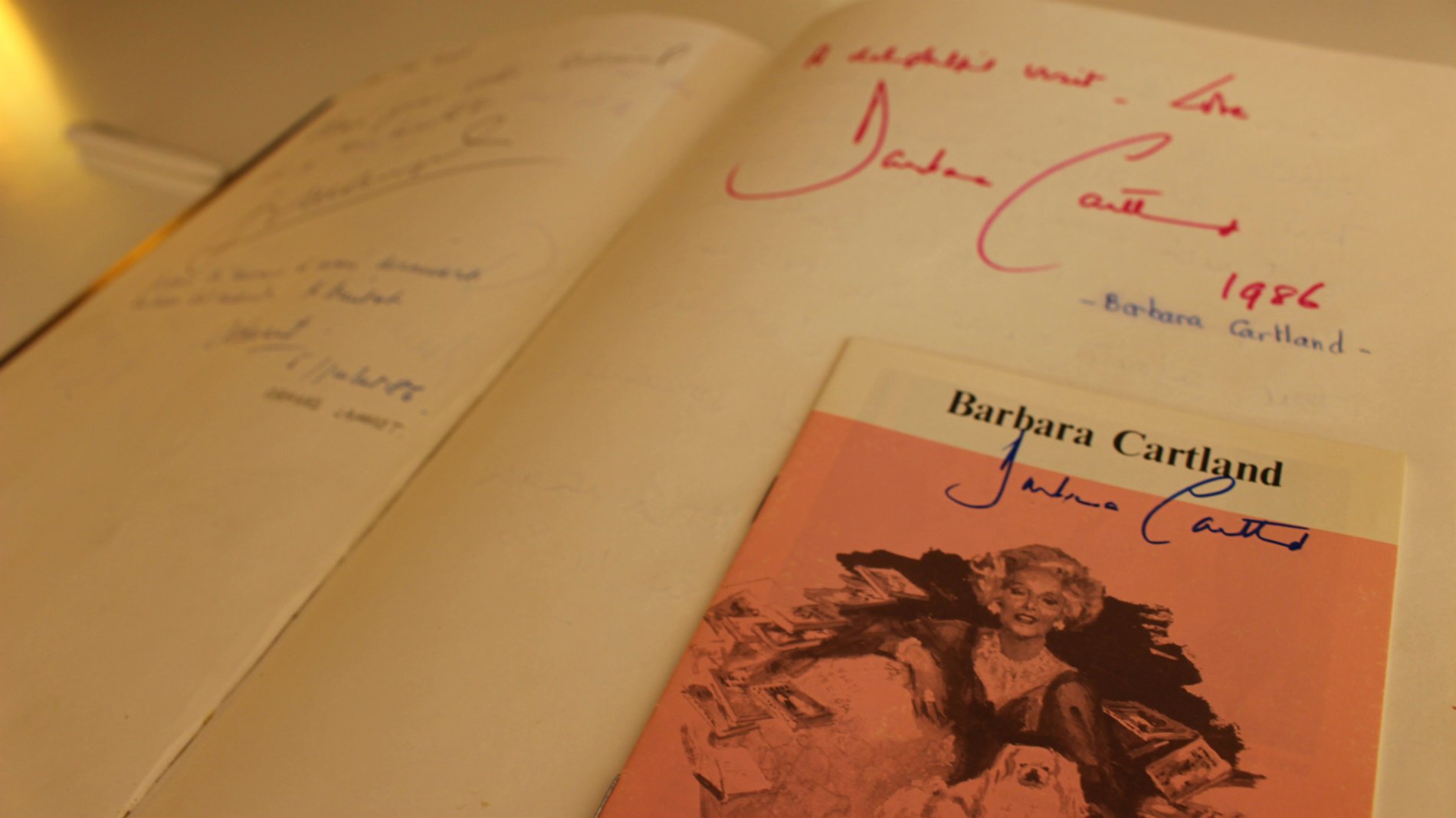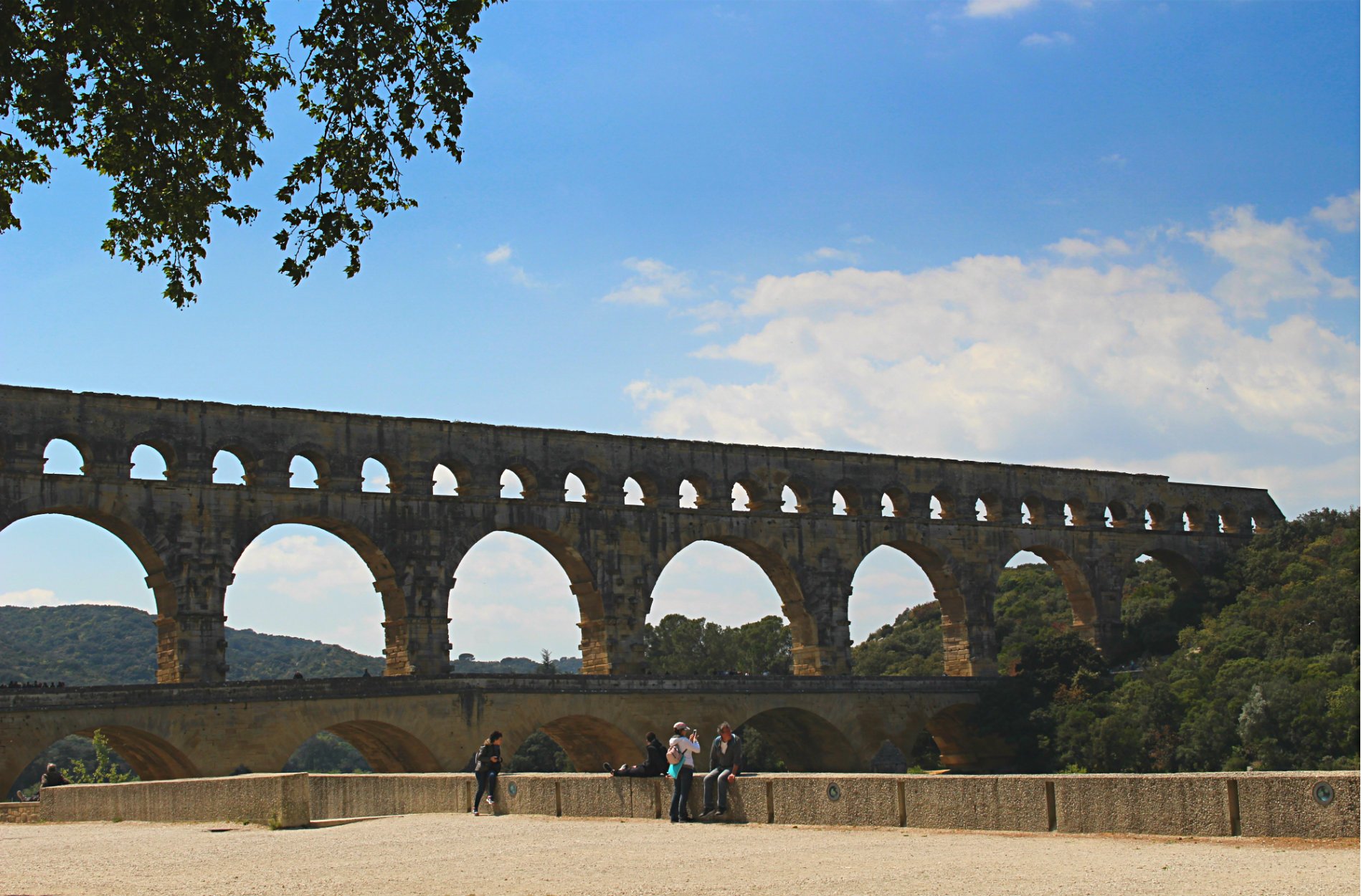Picture the South of France without the beach, boatload of tourists, and the bling. You get Uzès – a hidden and meticulously preserved town known for its Renaissance architecture and Roman flair.
Winter is like my neighbor’s receding hairline. Inconspicuous. Its decline is subtle and gradual. While seasons regenerate, renewed by annual equinoxes, his crowning glory showed no signs of recovery.
Sitting at the Café De L’hotel, a brasserie reminiscent of a 60’s film set in the little languid town of Uzès one Saturday morning, conversations billowed against the hissing of the espresso machine. Listening in to the chatter, never before had I been entertained by the locals on things that mattered to the French—government, wine, union strikes, “that” choice between getting a new wife or a dog, and bien sûr, the weather.

If there has been an occasion when they all agreed unanimously, it’s the latter. Their throats swelled in protest as they lamented about the lingering cold just when all the nearby seaside enclaves in the South of France had already begun welcoming the arrival of summer.
In this well-preserved commune in the Gard department, just a mere three-hour drive from the coastal city of Nice and 16 miles northeast of Nimes, winter endures on. Though there are occasional moments of reprieve, like days when one could leave the house with just a sweater and when the sun would burst out from behind the thick, ominous steel gray sky like a benediction.
It seems that summer had been in everyone’s mind. A thought of the much-anticipated season evokes a certain enthusiasm. An enveloping warmth that softens the hardened French guise—a facial malady brought by the erratic, clingy winter. With anguishing reports on climate change, everyone is uncertain when summer will finally come.

My drifting senses snappily recoiled as the barista placed the cup against the porcelain saucer, making a clink. The waiter came and brought my coffee and then went on to the next table to serve the newly arrived couple after a fond exchange of bisous.
Between the haze of cigarette smoke and hysteria, I sat on a high chair in a corner, happily taking a peek into the life’s daily ritual of this town at the same time sympathizing with its inhabitants. Above me, frames hung on the wall, forming a mosaic. There are private collections of paintings and photos of several artists whose eyes stare bravely into the future.
When friends back home in the Far East think about the South of France, they imagine a part of a country synonymous with sun and sea. On a mission to blur the lines and offer inspirited wisdom on avoiding hooting tipsy backpackers charging out into the night as well as finding a peaceful retreat that is quintessentially à la sud, I ventured inland, crossed the other side of the Rhône (the river that originates from the Swiss Alps and runs through Southeastern France), and set foot in the town of Uzès.

A prelude in knowing Uzès is to get acquainted with one of France’s prolific writers, André Gide, who fondly wrote “Oh little town of Uzès!” in his memoir. “If you were in Umbria, how the tourists would flock from Paris to see you!”
For Gide, Uzès offered respite from Paris. His sojourns to his father’s hometown constituted of hunting insects, a search for inspiration for his next novel, and marveling at the landscape, which influenced his views as a writer. “The rough garrigue was adorned with clumps of purple and white cistus, and the air was filled with the scent of lavender,” he wrote in one of his numerous visits to Uzès.
Just like in his time, the Mediterranean vegetation remained unchanged; it’s as if Gide may have described it only yesterday. Flowers of varying pastels proliferate the hilly and rocky terrain. Flowerbeds adorned the streets, and cascading vines dangle from the windows. From time to time, one catches a sedating scent of lavender.
I wandered around the town’s narrow cobbled streets that date back to medieval times. Stone walls stood magisterially—like silent emissaries from one history to another. Like many towns in France, Uzès was founded by the Romans. Then came the Franks from the north, the Jews, and the Huguenots, and along with them were clashes smeared by religious uprisings and political reforms during the French Revolution.

From the shady boulevard past art galleries and artisanal shops, I veered down and came across one of the town’s dominant landmarks—the Duchy, or the Duke’s Castle. The white limestone walls and turret glowed in the soft light of the afternoon. A befitting residence for the duke and his family, who visit every summer.
On the eastern side of the town, juxtaposed to the solid massif of St. Théodorit Church, sits a bell tower known as the fenestrelle. Much like the Leaning Tower of Pisa, lacy and meticulously built without the vertiginous height.


Uzès beating heart lies in the Place aux Herbes. A beguiling square ensconced by stone houses of ornate iron balustrades, rows of arcades, and a fountain smack right in the middle. Watch the square transform during Wednesdays and Saturdays when markets are held.
Watch the square transform during Wednesdays and Saturdays when markets are held. Colorful makeshift stalls and shops make up a perfect day out soaking in the best local flavor of the region. The entire old town is one big pedestrian space where tourists and locals alike gather for a collective celebration, to enjoy a glass of rosé or sip morning espressos. In the spirit of discovery, I find it most alluring to momentarily forget the sense of purpose whilst learning new names of bizarre-looking and bewildering array of local produce.


If there is something to be said about Uzès, there is very little pretense here. It’s more under the radar than St. Paul de Vence in Provence and has a reverential vibe in comparison to St. Remy. Take the food, for example. A lunch at La Table D’ Uzès, a Michelin-starred restaurant that transforms local produce into Languedoc gastronomical delights.
I dined under a limestone arch like a duchess with waiters ready to spring into action at any moment’s notice. Every bite came with a flourish of nostalgia.The ambiance and décor complemented delicate and imaginative cooking made by a learned hand. Grands crus and cuvées wines added to the temptation to stay for a while.

That night at Le Vieux Castillon, an intimate, charming hotel in a secluded Renaissance village of Castillon du Gard and a 15-minute drive south of Uzès, I took out my map and spread it across the bed. With a pen, I traced the road charting my return route and marked those little villages that I might pass on the way. From time to time, I would look outside and gaze at the moon that hung pale and gibbous.
From the small terrace, I could see the terracotta roofs dominoed on a vertical hillside. Nearby were vineyards amidst olive trees that were bent or uprooted or thrown into a fury by the north wind, as the French called it, ‘le mistral.’ It is a landscape somewhere between tame and wild, much favored by romance novelist Barbara Cartland and artists like Bono and Mick Jagger, who sojourned in the hotel framed by the ruins of a 10th-century chateau.


Yet Castillon de Gard isn’t a place that brags many look-at-me attractions like Uzès. Despite its proximity to the majestic Pont du Gard, a 60 A.D. Roman aqueduct, the village has a church, a square, a post office, a few cafés, and medieval dwellings converted into modest residential houses. And like many isolated French hamlets, peace and tranquility run plenty. It’s an off-the-beaten-track type of village, where the traveler can easily slip into the lazy rhythm.

I drove back to Nice the next day, leaving the village and the town of Uzès behind with a promise to return. I passed couples sitting in a café, treading tractors on slow motion, and trees that change with each season: yellow in the fall, green in the summer, and bare in the winter.
I cast my last gaze at the landscape awash with the morning light, all the while absorbing the region’s true appeal—a languid pace. Just across the river, one can look at the South of France or the world with fresh eyes.
BUTTER MY BAGUETTE
This website made of love strives to produce FREE CONTENT.
Help me tell more stories and keep this website free of any advertisement by supporting Flying Baguette in inspiring more people and connecting you with other cultures and communities around the globe. Donate a little or as much as you can afford to keep the magic of Flying Baguette going for years to come. Share your support through the icons below ⬇️

















Never heard of Uzes but my interest grew the more I read about it. It does sound like a typical small town in the middle of nowhere that requires some efforts to get to, but then you get rewarded with tranquility and picture perfect settings. In parts it reminded me of Tuscany. The hotel you’ve stayed in with the pool oozes relaxation.
Carolin | Solo Travel Story
Really enjoyed your introduction to this very lovely part of France. Uzès looks like a delightful town to explore. It also seems to be surprisingly good for foodies – a Michelin restaurant (I feel we would almost certainly succumb to all those cheeses!) as well as the Place aux Herbes with incredible vegetables? Count us in! We also love architecture so would most definitely detour to Castillon-du-Gard to see the remarkable aqueduct.
Mitch & Colin from Very Tasty World
You captured the sultry yet romantic aspects of this part of the world, with a great introduction to what the area and town feels like.
It is steeped in history too, both internationally and nationally.
You brought Uzes to life and I was also surprised at a Michelin starred restaurant in such a far flung area of France
I’ve always been intrigued by the south of France, and you’ve really piqued my interest here. I’ve only heard of a few towns, so thanks for putting Uzes on the map for me with your beautiful writing. It definitely seems like there is more to this area than expected.
The only place in the south of France I’ve ventured to yet is Nice but it looks like I’ll need to at Uzes too, especially since it’s close enough to Nice, but with a very different look to it. The smells of lavender are what might guide me. Well, that or all those cheeses. I’d happily make a dent in Uzes cheese supply.
You have added yet another destination to my list! Uzés seems absolutely charming and just the kind of place I enjoy exploring. I was surprised by the inclusion of a Michelin restaurant in such a small community but the residents of France do know good food, so I probably should have expected it! I do love visiting and revisiting southern France and you’ve given me something new to look forward to on my next visit.
Lyn | http://www.ramblynjazz.com
We have never been to Uzès… yet! It seems like the perfect balance for a town of South of France – thank you for sharing. I would love to have lunch at la table d’Uzès, whenever it will be possible again!
What an amazing story teller. I loved your blog and it grabbed me with your opening paragraph. The incredible pictures helped. THXS for posting
I LOVE this part of the world and can’t wait until I can spend a lot more time here. This seems like such a pretty village and the food looks banging! I’ll have all the cheese please….
Sounds like a beautiful little town to be in. I love the beautiful cobbled streets. Will mark Uze’s for any South of France trips 😀
I feel the part about summer not arriving. I think our heating has never been still on this late in spring. I must admit I am one of those people who only think about the sunny southern France. Uzes does sound very charming though. And who would have expected a Michelin Star restaurant?
You really make this village come to life, Jan. I’ve just put Uzes on the bucket list. I used to pass through Montpellier, Nimes, and Avignon a dozen times, but had never heard of Uzes before now.